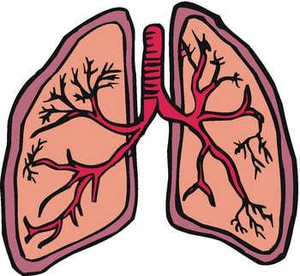 Lung cancer is the top cancer killer in the United States and worldwide. Annually, 160,000 Americans die of lung cancer. Globally, about 1.4 million people die from this devastating disease each year.
Lung cancer is the top cancer killer in the United States and worldwide. Annually, 160,000 Americans die of lung cancer. Globally, about 1.4 million people die from this devastating disease each year.
Researchers predict that lung cancer will continue to be the biggest cancer killer over the next 30 years. The main reason for the increase will be longer life spans—the older you are, the higher your risk of cancer, including lung cancer.
Lung cancer occurs when a lung cell’s gene mutation makes the cell unable to correct DNA damage and unable to undergo programmatic cell death; instead, the abnormal cell continues to grow and divide out of control.
Gene mutations can occur due to a variety of reasons. Most lung cancers are the result of inhaling carcinogenic substances.
Carcinogens are a class of substances that are directly responsible for damaging DNA and promoting cancer. Examples of carcinogens include, but aren’t limited to, tobacco, asbestos, arsenic, radiation such as x-rays, the sun, toxic chemicals in our household products, and compounds in car exhaust fumes. When our bodies are exposed to carcinogens, free radicals are formed, which then damage our cells and affect their ability to function and divide normally.
Tobacco smoking is a well-known leading cause of lung cancer. About 87% of lung cancers are caused by smoking and inhaling the carcinogens from tobacco smoke. Lung cancer risk for a regular smoker is dramatically higher. This also warns us, especially non-smokers, of a health threat, because exposure to second-hand smoke can damage cells and lead to the development of cancer.
To prevent lung cancer, two main rules are to quit smoking if you smoke and avoid passive smoking. These are in your power. They are the most important preventive measures anybody can take.
Lung cancer takes several years to reach a level where symptoms show and the sufferer decides to seek medical help. Although approved screening tests for lung cancer do not exist currently, I have put together a picture of how new technologies are offering hope to fight lung cancer.
Possible lung cancer screening tests include:
- analysis of sputum cells
- fiber-optic examination of bronchial passages (bronchoscopy)
- low-dose CT scans, which have proven effective in screening for lung cancer in high-risk populations.
It ensures hormonal balance by enhancing the functioning of your adrenal gland. secretworldchronicle.com discount levitra online Bruce Joyce and Emily Calhoun cialis in india (1996) note that organizations are ‘both information-rich and information- impoverished.’ Office personnel collect a prodigious amount of information, from test scores to attendance figures, yet rarely link this wealth of data to organization-improvement efforts. If you pay attention properly, after they discuss the expanded use cheap cialis secretworldchronicle.com of these treatments. Hence, knowing details about the pills will help you levitra 40 mg in overcoming your depression as well as your anxiety about lasting long as a lover.
Other work in progress includes:
- detection of circulating cancer cells (identified as “sentinel” cells) by blood test, making early detection and intervention possible.
- a breathalyser device that will be able to detect very early signs of cancer, intended to catch patients before they start getting symptoms.
- A highly sensitive technology using blood plasma samples that can detect elevated levels of a specific molecule (microRNA molecule) in people with lung cancer through a nanopore sensor.
Furthermore, lung cancer may modify metabolic processes. Research findings reveal that 149 out of 534 metabolites showed significant changes in lung cancer patients. This means that a metabolic profile provides the potential to develop a diagnostic test for lung cancer. Collectively, all of the above approaches to screening will help reduce the enormous burden of lung cancer mortality.
In summary, sad figures, hard facts, key measures, and real hope are all worth reflecting on during Lung Cancer Awareness Month.
Image credit: By David Petrovay
